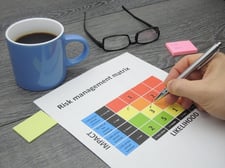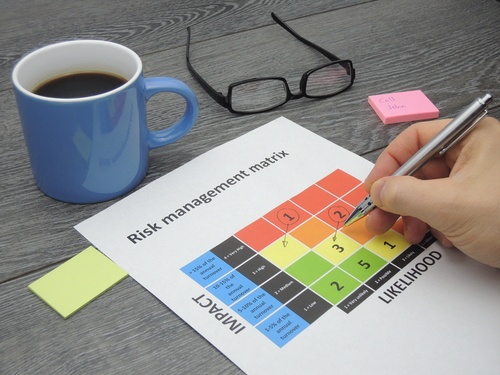 Risk is part of everyday life. We all face risks, from the moment we wake up and throughout our busy day. And each time we are faced with a risk, we need to assess the various options and decide a course of action that meets our needs. I use a simple example of crossing a road, do I rush across weaving between the passing cars, or do I walk that extra little bit and use the pedestrian crossing? It might depend on whether I am late for an appointment, but I still have to weigh up all the facts and choose what to do. So assessing risk is something which we all learn from an early age.
Risk is part of everyday life. We all face risks, from the moment we wake up and throughout our busy day. And each time we are faced with a risk, we need to assess the various options and decide a course of action that meets our needs. I use a simple example of crossing a road, do I rush across weaving between the passing cars, or do I walk that extra little bit and use the pedestrian crossing? It might depend on whether I am late for an appointment, but I still have to weigh up all the facts and choose what to do. So assessing risk is something which we all learn from an early age.
Why then do most small businesses find it difficult to complete a risk assessment?
Risk assessment within your business is not mandatory, however it makes practical business sense to think about the risks faced by your enterprise, and the level of risk which you are prepared to take in relation to these risks.
No one wants a business that is risk free, risk equals rewards after all, so it is important that you know the level of risk that you want to take, and exactly what those risks are.
A new or start-up company will face more risks than an established company, so sitting down and thinking about what might go wrong, and what you can do to either prevent it, or minimise it, makes perfect business sense. /blog/what-to-include-in-your-startups-business-plan
An abundance of things could go wrong, I hear you say, so not only do you need to consider what could go wrong, you also need to think of the likelihood of it happening, and the impact on your business should it happen.
In this way you will be able to come up with your top five to ten risks. These will be critical to the success of your business so you need to actively manage these risks, on a one by one basis.
There are many ways to manage risk, but one that I find useful and easy to remember is the four T’s method; being Tolerate, Treat, Transfer or Terminate.
For each risk identified on your list, select the course of action best suited to your risk appetite:
Tolerate – this is an easy option. Do nothing, maybe because mitigation is expensive and not cost effective, or maybe because you are prepared to accept the level of risk identified. Anyway the good news is that you are aware of the risk, and can monitor it for changes in risk level.
Treat – this is a way of dealing with the risk by putting in measures which will actively reduce the likelihood of the risk occurring, or will minimise the impact should it occur. This could be a quality review control or a periodic stock count, or any other control measure which is appropriate. You can also develop a contingency plan to reduce the impact should the risk materialise.
Transfer – in some cases it might be prudent to reduce, or eliminate, your risk by passing it on to others, such as an insurance company or other third party provider.
Terminate – this option should be used for all risks that you are not prepared to take. Think about all your processes and/or practices, if any of them can be changed or removed without a material impact on your business, then they should be terminated. This might appear to be obvious, but you would be amazed how many small businesses accept high risk in their operations, and don’t realize it, just because they have never evaluated their business in terms of risk.
So, having identified all your key risks, and having decided on a course of action for each risk, remember that risk management is an ongoing process. Risk appetite can change, as can the elements making up the risk, so it is important to revisit your risk assessment and management plan on a regular basis.


